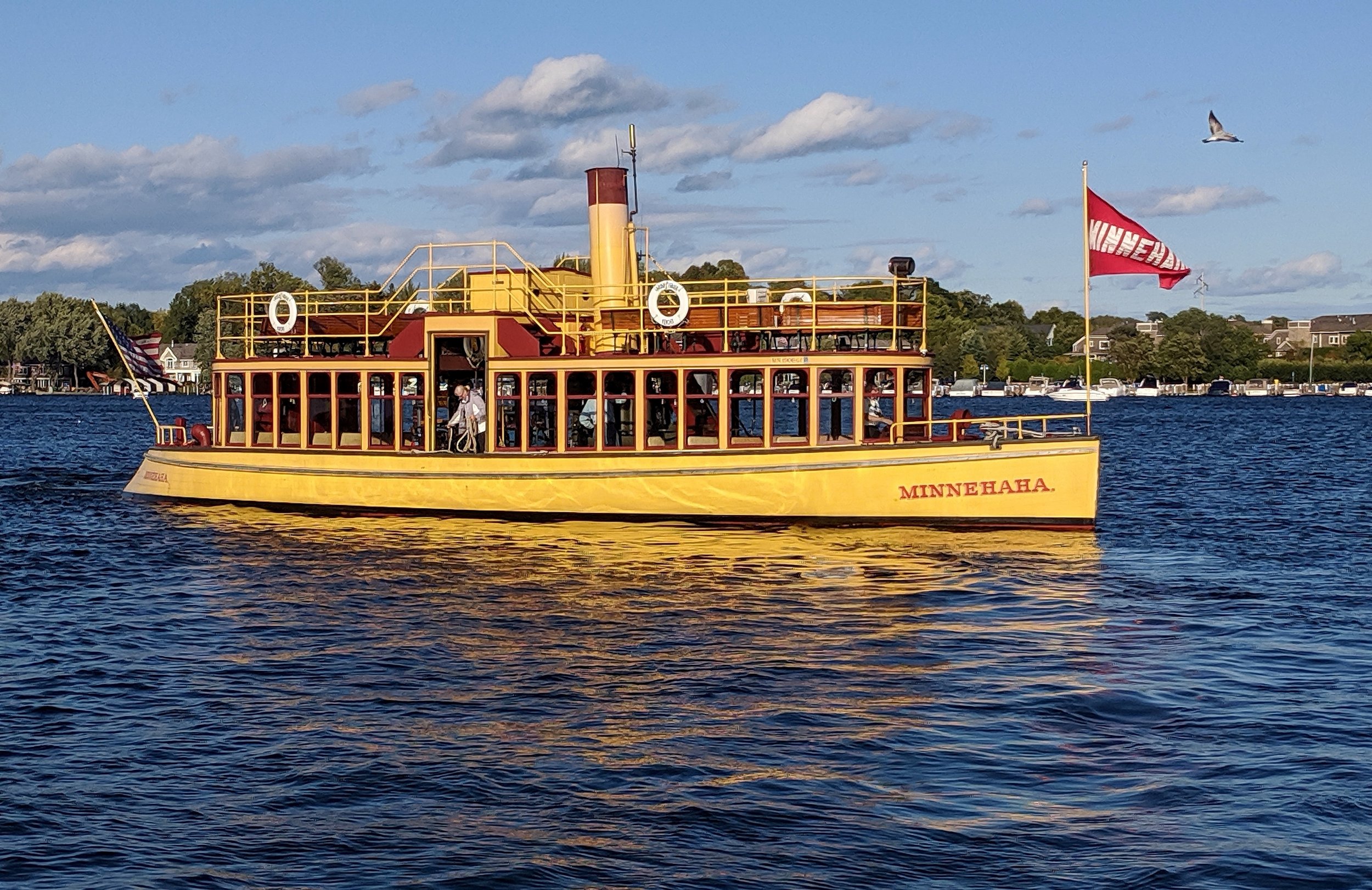
National Register Nomination of the Minnehaha
Constructed in 1906, salvaged in 1980, refurbished starting in 1990, and relaunched in 1996, the steamboat Minnehaha continues to ferry passengers as the only extant express boat, sometimes referred to as a streetcar boat, on Lake Minnetonka in Minnesota. The Minnehaha was one of six streetcar boats launched by the Twin City Transit Company in 1906 to provide service to lakefront communities around Lake Minnetonka. The streetcar boats, also called the Express Boats or “yellow jackets” due to their distinctive canary yellow exterior paint. The boats made stops at public and private docks, allowing those with lakefront property to commute to Minneapolis and visitors to spend a summer day on the waters of Lake Minnetonka. Row 10 authored the nomination of the Minnehaha to the National Register of Historic Places for local significance under Criterion A for its association with the themes of transportation and recreation.
State Historic Tax Credits for the Academy of the Sacred Heart at Grand Coteau
The main classroom building of the Academy of the Sacred Heart at Grand Coteau opened in 1830. Rehabilitation of the gallery was necessary for continued use of the main classroom building. Long-term water issues had weakened the primary support beams, rotted through the deck floorboards, and deteriorated the gallery ceilings on the first and second stories. Local structural engineers, contractors, and architects developed plans that met safety codes for the ongoing protection of the gallery. In consultation with the State Historic Preservation Office, features selected for the rehabilitation included in-kind replacments and modern materials better suited to the climate of south Louisiana. Row 10 assisted Sacred Heart to secure the 20% Louisiana State Historic Tax Credit for the rehabilitation. In 2022, the Louisiana Trust for Historic Preservation recognized the Academy of the Sacred Heart with its Stewardship Award.
Historic Resources Survey of Denham Springs
Denham Springs is a town of approximately 10,000 people located east of the state capital of Baton Rouge. Development of the twon was aided by the construction of the Baton Rouge, Hammond, & Eastern Star railroad, later the Illinois Central, which helped convert the growing commercial district into a shipping center. The farms in the region surrounding Denham Springs became known for their strawberries. Row 10 was retained by the City of Denham Springs to conduct a survey of historic properties throughout the city. Row 10 surveyed more than 200 buildings to the require of the Lousiana Division of Historic Preservation’s Historic Resource Inventory form. Row 10 also nominated the historic commercial core of the city to the National Register of Historic Places.
Lafayette Historic Overlay Design Guidelines
Lafayette is one of Louisiana’s most diverse and culturally significant regions. Music, art, food, and dance are at the heart of our Cajun culture. There are over 125 locally designated landmarks, National Register buildings and districts, and significant cultural places located in the parish, most found in and around downtown and its older neighborhoods, yet the deterioration of Lafayette’s housing and streetscapes in historic neighborhoods was identified as a challenge in local master plans. Protecting and preserving our culture is good for maintaining property values, supporting local businesses, and preserving our diverse cultural heritage. Row 10 assisted the Lafayette Consolidated Government to develop historic district guidelines to meet the goals of the master plan. These historic district guidelines are intended to support the utilization of Lafayette’s historic neighborhoods, enhance the character of the neighborhoods, and protect the cultural heritage of Lafayette.
Historic Resources Due Diligence Studies
Row 10 has considerable expertise in studies designed to recognize potential impact to cultural resources in advance of construction and development projects. These studies assist the agency or developer to design and implement a strategy for compliance with Section 106 of the National Historic Preservation Act (NHPA) as well as in the evaluation of impacts to cultural resources under the National Environmental Policy Act (NEPA). These cultural resource impact studies identify historic buildings and districts, archaeological sites, and other historic properties that may be affected by a potential project, identify potential consulting parties and delineate next steps for the successful completion of the Section 106 process.
Historic Preservation Plan for the Togus VAMC Quarters Building 1
Quarters 1, built 1869, is the only original building from the establishment of the Eastern Branch of the National Home for Disabled Volunteer Soldiers. Quarters 1 is a two-story brick building oriented towards the southeast. The house exhibits characteristics typical of the Italianate architectural styles, such as arched windows and deep eaves with decorative brackets. Photograph evidence shows the building once had a full width, open porch on the southeast elevation, but the building now has a partial width, enclosed porch. The house was designated a National Historic Landmark (NHL) in 1974, as well as a contributing element to the Togus VAMC and National Cemetery Historic District listed in the National Register of Historic Places in 2012. Row 10 drafted a Historic Preservation Treatment and Maintenance Plan for Building 1 to help guide long-term use and preservation of the resource.






